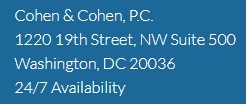For years now, defendants in motor vehicle collision cases have been relying on experts in the field of biomechanical engineering to defeat plaintiffs personal injury claims. They do this by presenting an analysis, based on what they claim are accepted scientific principles, to show that the forces generated in the collision were not sufficient to cause the claimed injury. More and more, courts all over the country are prohibiting the use of these so-called experts at trial and severely limiting the scope of their testimony.
In theory, a biomechanical expert takes the available information about a motor vehicle collision and, using physics and engineering principles, human anatomy and physiology, relevant scientific studies, and safety and manufacturing information about the vehicles, determines whether the forces generated in the collision were sufficient to cause the alleged injuries. With enough information, the motion of the occupants inside the vehicles can be determined, and it is this sudden and unexpected motion that can cause the occupants to either impact the interior of the vehicle or to move in a way that exceeds the natural physiological range of motion of human beings, either of which can cause injuries. This process is known as the expert’s “theory of causation.”
This analysis involves determining, among other things, the weight and respective speeds of the vehicles. From this information, the expert determines the amount of energy that is transferred to each vehicle as a result of the impact. The expert then calculates the force sustained by the occupants of the vehicles.
The problem with this testimony is that these experts use deductive reasoning, extrapolation and inference, and report their conclusions as based on sound science. Unfortunately, with what appears to be a good deal of hocus-pocus and the use of complicated (and intimidating) mathematical formulas, they can sometimes fool a judge and jury. It is the judge’s role to preclude testimony that will not be useful to the jury, which includes testimony that is misleading, inaccurate, or irrelevant. A hearing must be held to determine if the expert’s opinions are based on sound, accepted and reliable scientific methods and principles.
The expert’s testimony must be precluded when the expert does not have enough information to form a proper opinion. An expert’s opinion not based on accurate facts is worthless. For example, if it is found that the biomechanical engineer had looked up crash test information or specifications for the wrong vehicle, or had not examined the vehicles or seen photos of the vehicles after the accident, did not know the height and weight of the injured party and where in the vehicle he or she was seated, or did not have other pertinent information regarding the collision, he or she could not properly conclude that the plaintiff could not have been injured in the accident.
Plaintiffs’ lawyers, like a personal injury lawyer New York, NY trusts, must be prepared to challenge the foundation of the expert’s opinions. Preparation must begin from the moment the plaintiff’s attorney is noticed of the proposed expert. Make a list of the pertinent information that the expert did not have or did not consider. Be thoroughly knowledgeable of the materials, publications, references, articles etc.…that the expert relied on as the basis for his opinions. Only then will you be adequately prepared to confront this “junk science.”
Thanks to our friends and contributors from Okun Oddo & Babat, P.C. for their insight into car accident cases.

